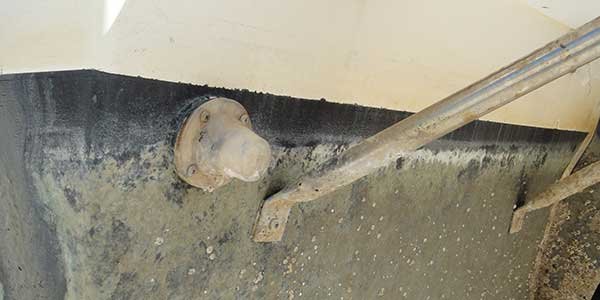Before buying my latest boat I researched some of the common issues in smaller, recreational vessels. These notes relate to the thread topic.
*Many decks on recreational vessels under 30 feet are mistakenly termed self-bailing, with good looking scuppers and nice hatches well above the load waterline. Only later one discovers that the deck drains lead to cheap hoses that drain into the bilge and not overboard.
*Modern boats are often designed with a fiberglass liner and a deck that completely covers the bilge and it has drains that look like they would drain overboard. It's just poor design to have them drain into the bilge. Boats do not sink because bilge pumps fail. They sink because of design issues and because we fail to actively ensure that the seawater will stay on the outside of the boat.
*Bilge pumps on recreational vessels are designed to remove nuisance water and minor leakage only. They provide for only limited, short-term results. They are not long-term solutions. The typical 12 volt electric pumps are meant for intermittent use. They are often poorly wired and plumbed and are usually well under the actual capacity needed for any serious demand. They are prone to plugging and failure and may be hard to access. Float switches fail. Bilge pumps and switches should be independent and redundant. Larger boats should have manual pumps installed, as well.
*The most common design problem leading to trouble is simply that hatch openings in the decks cannot be dogged down and are not fitted with proper gaskets to make them watertight. Another common design problem is that water backs up through the scuppers in bad weather and then drains back into the bilge. The pumps work but eventually they fail or the battery is discharged.

*Often one sees poor design in scupper or freeing port locations. An immediate sign of a pending problem is a boat with float-ball-style scuppers. These float-ball style scuppers are installed when water would otherwise backflow into the boat. They're not designed to keep a boat afloat. The American Boat & Yacht Council (ABYC) has recommended standards for the placement of scuppers, scupper sizes, and the minimum heights above the load waterline of scuppers both while the boat is static and when operating in poor conditions. One also sees scuppers that are right at the waterline and often below the waterline, though this sometimes happens when boat owners put too much stuff in the stern.
*Cockpit decks should be designed to be a minimum of four inches above the waterline but on smaller boats thats not always the case. Even when a small amount of water drains into the bilge the result can be disaster. That's because the boats may already be designed with little safety margin. Larger amounts of bilge water make a boat sit lower, compounding flooding problems. It also makes a boat increasingly unstable.
*Corrugated hose is a poor choice for scupper drains. Use polyester reinforced tubing instead. Builders seem to put hoses and thru-hulls in the most inconvenient (and inaccessible) places. If one can't inspect hoses and fittings how would one know drains are leaking or hoses are cracked until it's too late. They were designed to last perhaps 10 years but are now 15 or 20 years old. They are brittle, cracked and failing, yet we cannot see them, let alone service them.
*Outdrive universal joint and shift boot bellows should be inspected every year and replaced every third year, give or take. The rubber ages and begins to crack and leak, which may be the difference between weathering the storm or not. The gimbal bearing and gimbal housing can leak water into the bilge. Cheap plastic, corrugated drain hose should not be used unless well above the waterline. Better quality hoses are not expensive, considering their critical function.
*For most of the sinkings investigated in these reports , poor hatches were commonly to blame. They were either badly built, poorly located, or left unsealed. Scuppers must be well above the waterline. Scuppers near or at the waterline are worse than useless. A good hatch must have a positive-locking system and gaskets that are waterproof . If your deck hatches and inspection ports don't have gaskets, install them. Check drain hoses and pumps. If they are questionable, change them while you can.




